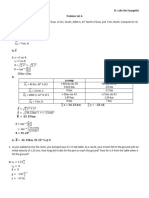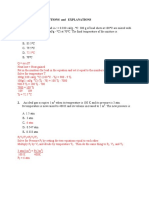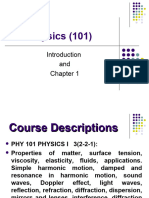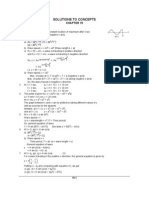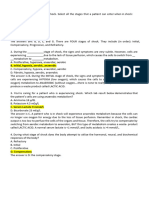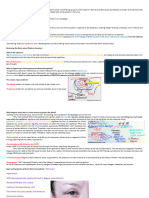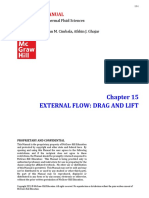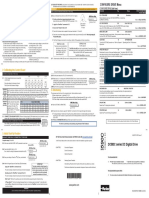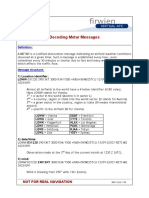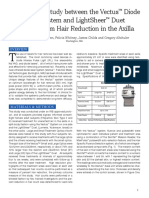0% found this document useful (0 votes)
1K views4 pagesSample Problems and GUFSA Method Modules 15 20
1. The document provides examples and explanations of concepts related to gravitational force, orbital mechanics, wave motion, sound, and the Doppler effect.
2. In module 15, it calculates gravitational force and distance given mass and gravitational constant. Module 16 demonstrates calculating orbital period and semi-major axis.
3. Module 17 discusses additional concepts in orbital mechanics. Modules 18-20 provide examples of calculating speed of sound, sound intensity, and Doppler shift frequency for an observer as a sound source moves away.
Uploaded by
papa.pradoCopyright
© © All Rights Reserved
We take content rights seriously. If you suspect this is your content, claim it here.
Available Formats
Download as DOCX, PDF, TXT or read online on Scribd
0% found this document useful (0 votes)
1K views4 pagesSample Problems and GUFSA Method Modules 15 20
1. The document provides examples and explanations of concepts related to gravitational force, orbital mechanics, wave motion, sound, and the Doppler effect.
2. In module 15, it calculates gravitational force and distance given mass and gravitational constant. Module 16 demonstrates calculating orbital period and semi-major axis.
3. Module 17 discusses additional concepts in orbital mechanics. Modules 18-20 provide examples of calculating speed of sound, sound intensity, and Doppler shift frequency for an observer as a sound source moves away.
Uploaded by
papa.pradoCopyright
© © All Rights Reserved
We take content rights seriously. If you suspect this is your content, claim it here.
Available Formats
Download as DOCX, PDF, TXT or read online on Scribd
/ 4










